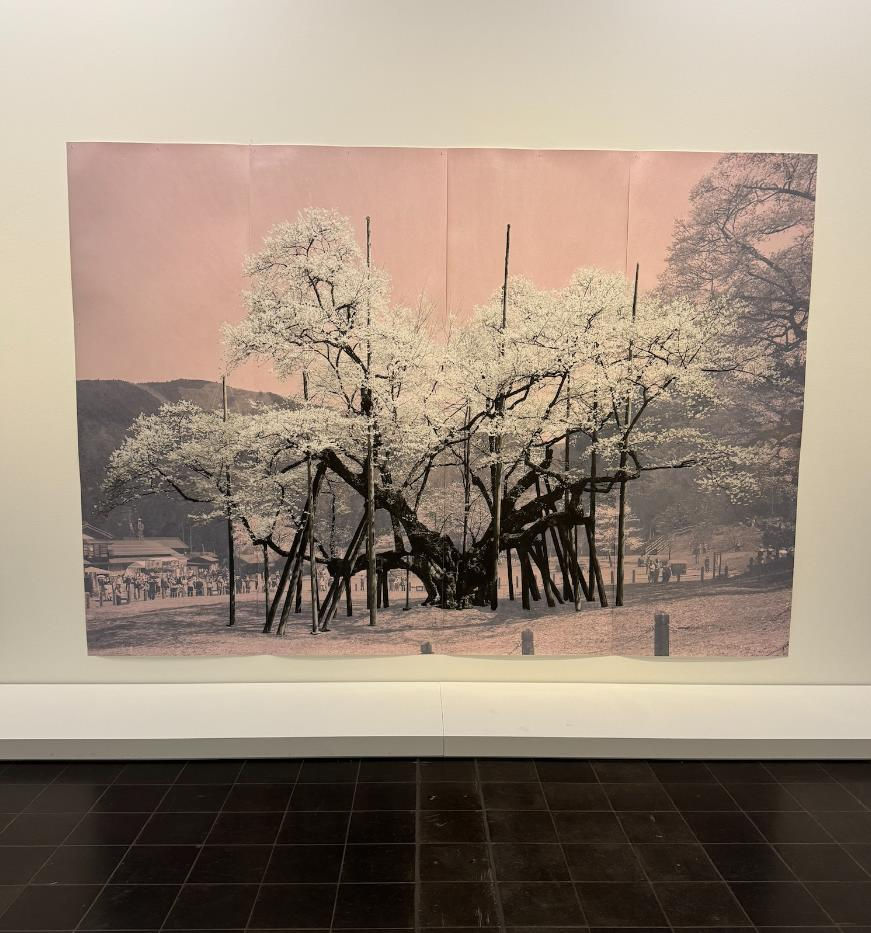Ifeoma U Anyaeji is a Nigerian multidisciplinary artist known for her innovative use of recycled materials, particularly plastic, in her sculptural works. She uses these materials to explore themes of sustainability, environmental awareness, cultural identity, and societal issues. Anyeji’s work often reflects the intersection of tradition and modernity, particularly in an African context.
In reflecting on Anyaeji's interview and my comments, I noticed many parallels between her ideas on cultural identity, tradition in materiality and craft, transformation, and healing. However, something else that stood out during the interview was that she often tells the viewers what they forget or don’t do. Unfortunately, I’ve realized that I sometimes do the same. When listening to recordings of my own speech, I noticed that I occasionally use a similar tone and approach of instructing the viewer. I really don’t like this.
True art doesn't provide answers or tell people what to think or feel. If it does, it’s no longer art—it’s kitsch. Genuine art raises questions and creates a space where the viewer can choose to reflect or not. For this reason, I’ll be drawing on a different artist, Tacita Dean, whose work and approach feel more relevant to my practice and more mature in her artistic discussions and statements.
Connections Between Tacita Dean and My Artistic Practice:

TACITA DEAN, Sakura (Usuzumi II), 2024. Courtesy of the artist & Frith Street Gallery London Photo from the exhibition in Hamburger Kunsthalle. September, 2024
1. Exploration of Time and Temporality:
Tacita Dean’s use of film, particularly with its slow pacing and extended takes, deeply engages with the passage of time, memory, and the fragility of existence - concepts I explore through the ephemerality of my Temporary Permanence installation. My work with fragile, degradable materials also engages temporality, although through a tactile rather than cinematic medium.
Critical Reflection: I could reflect on how the pacing of viewer interaction with my works mirrors the slow unfolding of time in Dean’s films. Can I manipulate the viewer’s sense of time even more in my installations, perhaps by incorporating sound or lighting to extend the experience of temporal decay and fragility?
2. Tension Between Physical and Digital:
Dean’s focus on analogue film connects with my exploration of the digital vs. physical in Fragmented Perspectives. Like Dean’s insistence on the tactile, hand-crafted nature of her films, my work with tangible materials critiques the impermanence of digital media and emphasizes the tactile experience.
Critical Reflection: How can I heighten the tension between digital and physical even more? Perhaps integrating film, video, or time-based elements as Dean does can give a new layer of exploration for my interest in how media distorts perception.
3. Historical and Cultural Memory:
Dean often deals with themes of history and collective memory, a subtle commentary on the residue of the past in the present. Similarly, my work with newspapers carries traces of recent events, bringing forth questions about how media shapes and distorts collective memory.
Critical Reflection: I can explore cultural memory further by experimenting with how my materials (such as newspapers) could be layered or juxtaposed with other historical or personal artefacts. Could integrating different temporal layers evoke a stronger sense of collective memory?
Franz West (1947–2012) was an Austrian artist known for his irreverent, playful approach to sculpture, furniture, and installation art. His works often encourage interaction with the viewer, blurring the boundaries between art, functionality, and everyday life. He is known for his unconventional materials and forms, and for challenging traditional notions of art as something to be passively observed.
Connections Between Franz West and My Artistic Practice:
1. Interactivity and Viewer Participation:
Franz West’s emphasis on engaging viewers physically with his ADAPTIVES - PAßSTÜCKE connects strongly with my interest in how art impacts perception and interaction, as explored in my Temporary Permanence installation. My use of newspapers and debris encourages reflection on media and temporality, while West’s works challenge viewers to reconsider their physical and intellectual interaction with art.

Galleries now, Astrid Bernadotte writes on Franz West, “The perception of art takes place through the pressure points that develop when you lie on it” – Franz West [On line] At: https://www.galleriesnow.net/newsletter/exhibition-selections-29-mar-2019/ (Accessed 21.10.2024)
Critical Reflection: I might explore further how to make my installations more interactive, potentially incorporating elements that invite physical engagement, in a way that reflects the fragility of my materials while also amplifying the themes of media and perception. How might my materials invite both touch and contemplation, as West’s do?
2. Democratization of Art:
West’s works blur the line between high art and everyday objects, which can resonate with my use of recycled newspapers and found materials. Me and West work with ordinary materials to critique traditional hierarchies within the art world.
Critical Reflection: How can I push further the democratization aspect of my art, especially considering my interest into the ethics of material sustainability? I can create more public or community-based works where the line between art and daily life blurs even more distinctly like West wanted.
3. Playfulness and Serious Themes:
West balances humour and playfulness with serious intellectual concerns, and I include the humour while thinking about political themes and media influence, temporality, and destruction. Our practices suggest that humour, play, and accessible materials can engage the public with difficult themes.
Critical Reflection: How can I integrate a form of "play" or less rigid visual language in my works, without undermining the serious political message? I might explore how humour or unexpected material use could help the audience access and reflect on themes like propaganda or destruction more deeply.
Comments